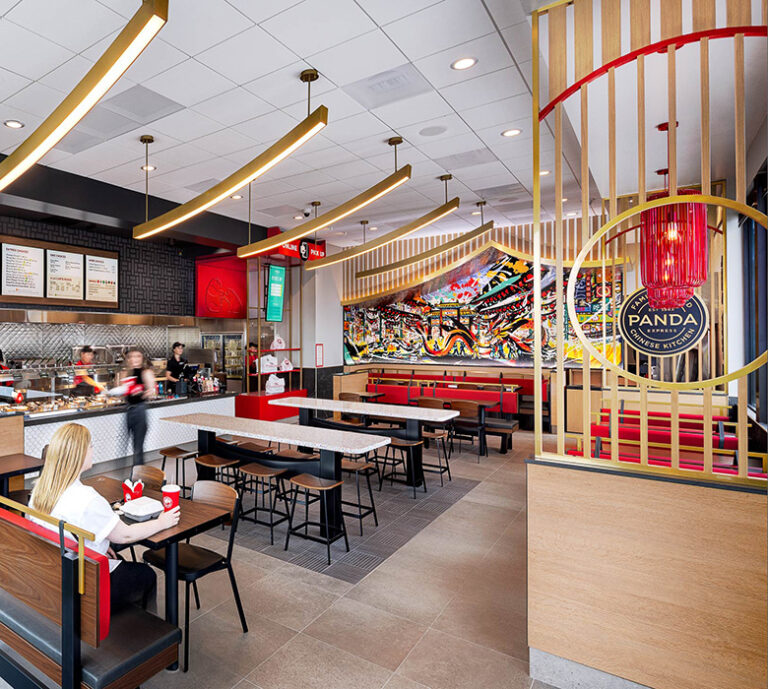Our Executive Director of Strategy, Bill Chidley, explores the critical elements of adaptive retail and why brands must better consider how to meet the growing individualized needs of their customers.
To say that retail experiences have undergone a sweeping transformation with the advent of digital, social, and artificial intelligence, would be to put it lightly. Today’s shopper, armed with choices and channels galore, has come to expect personalized and streamlined in-store experiences that meet their specific needs. What’s more, they want a “mind reader” brand that can predict and adapt to those needs as they happen; if not in real-time, then relatively quickly. Thus, retailers increasingly have to think of their stores as multi-use spaces which can accommodate customer journeys that vary substantially in terms of duration, mission, and other key variables. Beyond offering the familiar omnichannel purchase and fulfillment options such as buy online, pick up in-store (BOPIS), curbside pickup, and same-day delivery. Retailers need to reevaluate the store design to allow shoppers to choose the most convenient in-store experience for them.
By providing retail spaces that are designed to enable a broad range of customer journeys, retailers will win more trips and gain a significant competitive advantage. And who doesn’t want that? In a nutshell, these are all critical elements of adaptive retail: the creation of dynamic retail experiences that provide options to meet the varying needs of shoppers. While the environments will vary from brand to brand, the core principle is the same – the retail experience should adapt to a variety of trip types and situations, alleviating factors that could otherwise take your store out of consideration.
While retailers have always known that different shoppers have divergent priorities, now they must also recognize that individual shoppers want to use and navigate their in-store experience in multiple ways. Some visits may be brief and focused (think about a busy mom picking up ballet slippers for her toddler), while others will be lengthy and open-ended (a teenager looking for the perfect pair of shoes). No matter how customers choose to shop, they should feel like each experience is designed just for them.
CREATING THE RIGHT SPECTRUM OF JOURNEYS IS CRITICAL
At the core of adaptive retail is the need to identify the current journey biases of your store design. Is the store plan designed around a single mission type that may have been dominant, but isn’t today? When different missions are overlayed on your current plan do they create pain-points or inconveniences? Of course, there is also a need to be thorough in defining the universe of potential trip types, and prioritizing those that are “quick wins” versus big strategic moves. Creating a spectrum of trip types, with their corresponding journeys, is the first step. This is the strategic moment where the limits of the spectrum will drive the overall design objectives, outcomes, and define what success looks like.
A great example of how we put our adaptive retail philosophy to work was with a client in the specialty baby category. This big-box retailer was getting shoppers before the big day, and in the first month or two after the birth of the baby. Data showed that they were losing these hard-earned shoppers once the parents routinized their baby caregiving lifestyle. We realized that the store design was not working hard enough to keep shoppers as their needs evolved due to poor category visability, misaligned assortments, faulty department adjacencies, and overlooked communication opportunities. By designing in-store customer journeys that were tuned into evolving needs as babies become toddlers, the new design was able to appeal to shoppers for years, not months.
ADAPTIVE RETAIL IS INSIGHTS-DRIVEN
Another essential element of adaptive retail is recognizing that preferences and pain points differ substantially across shoppers. This is why one of the most urgent challenges for physical retailers is the development of strategies that cater to different journey types without compromising on the quality of the shopping experience for all shoppers. There will always be trade-offs when retailers build stores around multiple customer journeys. But by collecting and rigorously evaluating customer experience data with different trip types in mind, retailers can manage these trade-offs in a way that provides the best possible experience for the widest array of shoppers.
According to McKinsey, over two-thirds of retailers say their “greatest personalization challenge is the gathering, integration, and synthesis of customer data.” There are many data streams that physical retailers can use to map out customer journeys, identify pain points, and determine where the experience adds the most value. Retailers can combine traditional journey mapping with customer interviews and surveys to gather a blend of qualitative and quantitative data. At ChangeUp, we also use interactive work sessions which allow designers and strategists to rapidly prototype potential journeys and test them with real customers. This provides a more comprehensive picture of the customer experience, which informs decisions about store layout, brand differentiation, and strategy.
By using various data streams and shopper insights to identify the areas where customer satisfaction can be improved without impinging on other shoppers’ experiences, retailers can design stores that are ideal for many needs and great (if not perfect) for the rest. Finding this balance isn’t always easy, and retailers must constantly adapt as customer priorities shift. But it is possible for retailers to keep pace with evolving customer needs and goals if they focus on collecting the right data—and using it to accurately anticipate shopper behavior.
THE FUTURE OF RETAIL IS (AND ALWAYS WAS) PERSONALIZATION
As previously mentioned, shoppers want to be treated as individuals with their own unique preferences, goals, and concerns. This is why it’s no surprise that executives rank personalized customer experiences as the top loyalty activator. But the ways and means of personalization in the digital realm are materially different than in the physical realm of a store.
In a consumer universe that seems dominated by algorithms, a physical shopping experience is a way-in to personalization that isn’t about tailored online ads and item suggestions. It is about providing a shopping experience that feels right. Everything becomes personal in a store experience because no two shoppers are alike or are they trying to accomplish the same mission. Whereas in the digital realm the experience can be hyper-targeted and reduced to a screen, the store is multi-dimensional world that is experienced, and judged, differently.
To experience a store is to use a store as a resource… as a means to an end. Obstacles are real, annoyances burn calories not volts, and achieving a mission is instantly rewarding and not just a confirmation text. The store experience feels personal if and when it wins on the pain vs. pleasure scale- when the effort put forth is returned exponentially with reward. Adaptive design is about personalization because it broadens the base of shoppers who will believe that their time was well spent- that “convenient enough” paid off emotionally as they completed their mission. This is where the connection to your brand can get deeper and broader, making it relevant more often, and winning trips from other chains or channels.
Adaptive retail increases loyalty, attracts customers from competitors, and generates positive impressions of your brand. Despite routine assertions to the contrary, physical retail isn’t going anywhere – 85 percent of total retail sales still take place at brick and mortar stores, and the encroachment of e-commerce on this proportion has been flat for several years. By focusing on adaptive retail, physical retailers will ensure the sustainability of their business – and give themselves a critical competitive advantage – for years to come.



